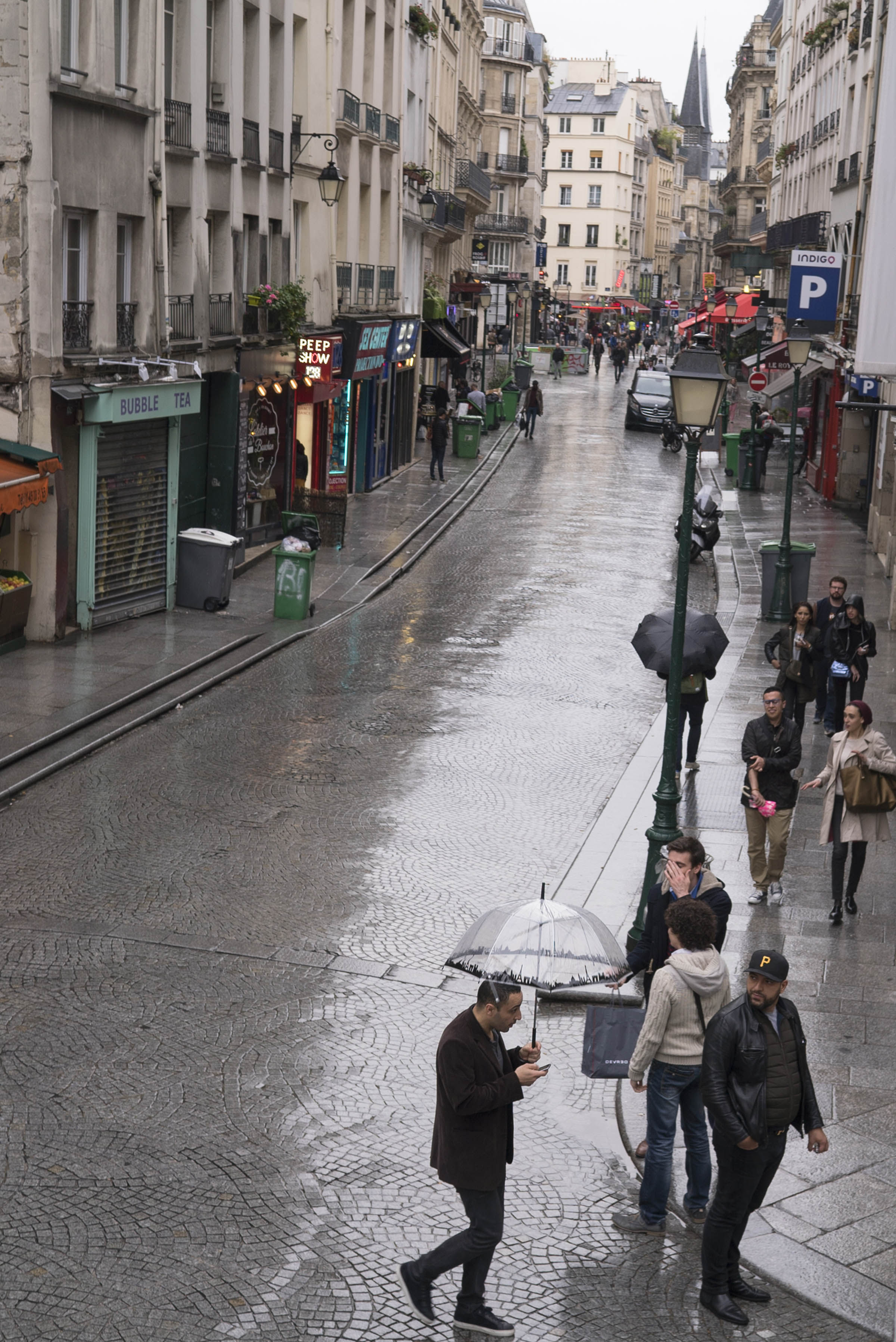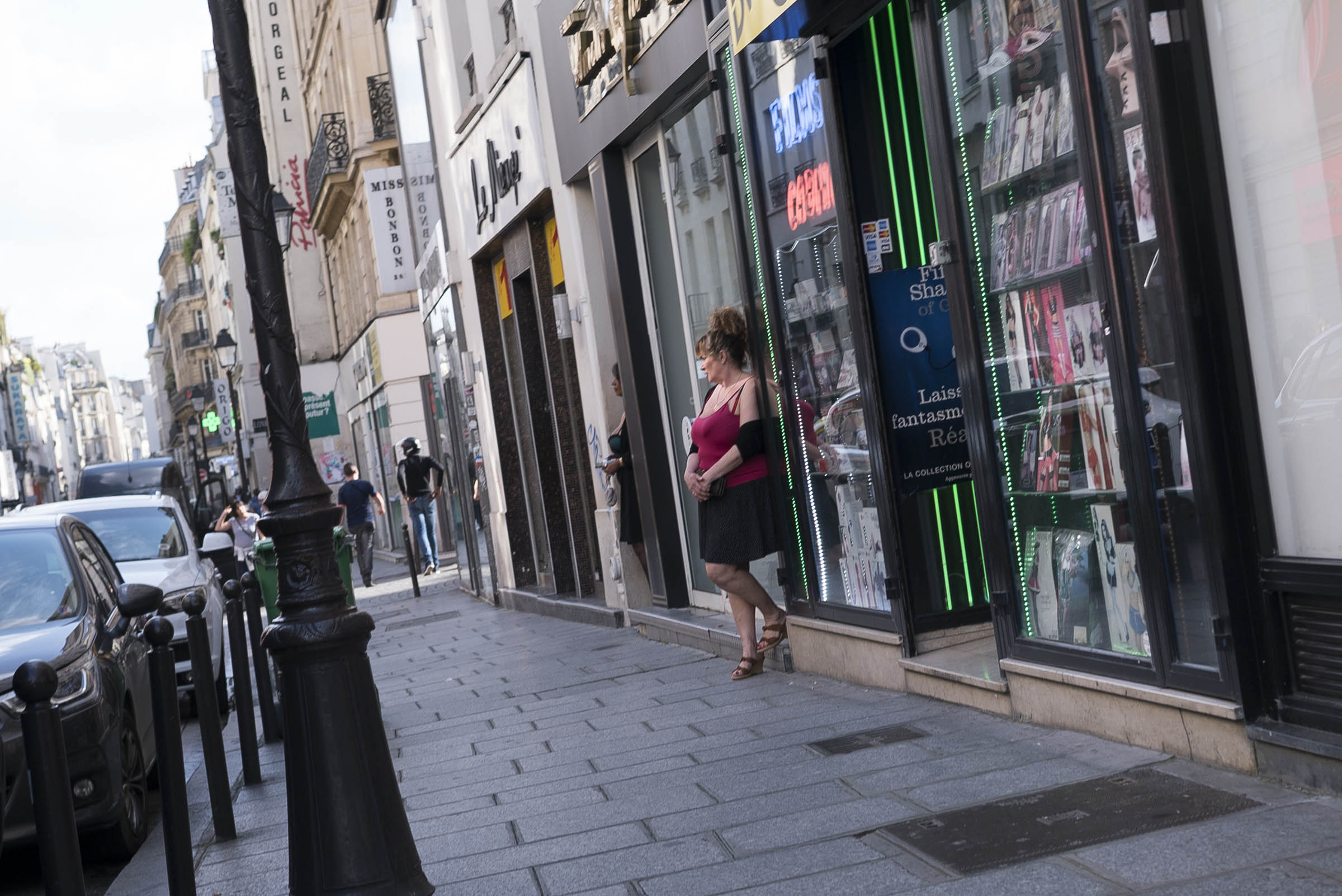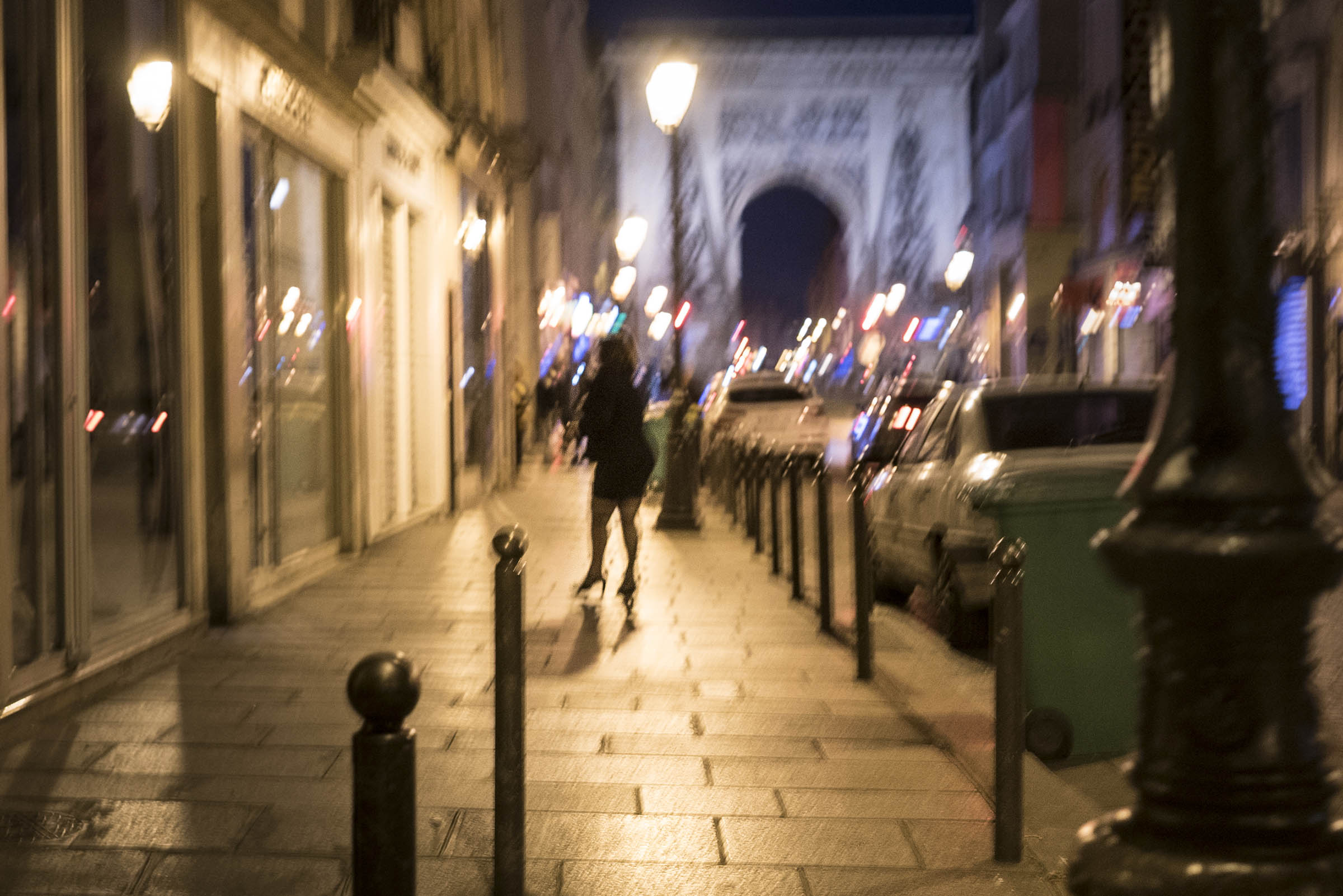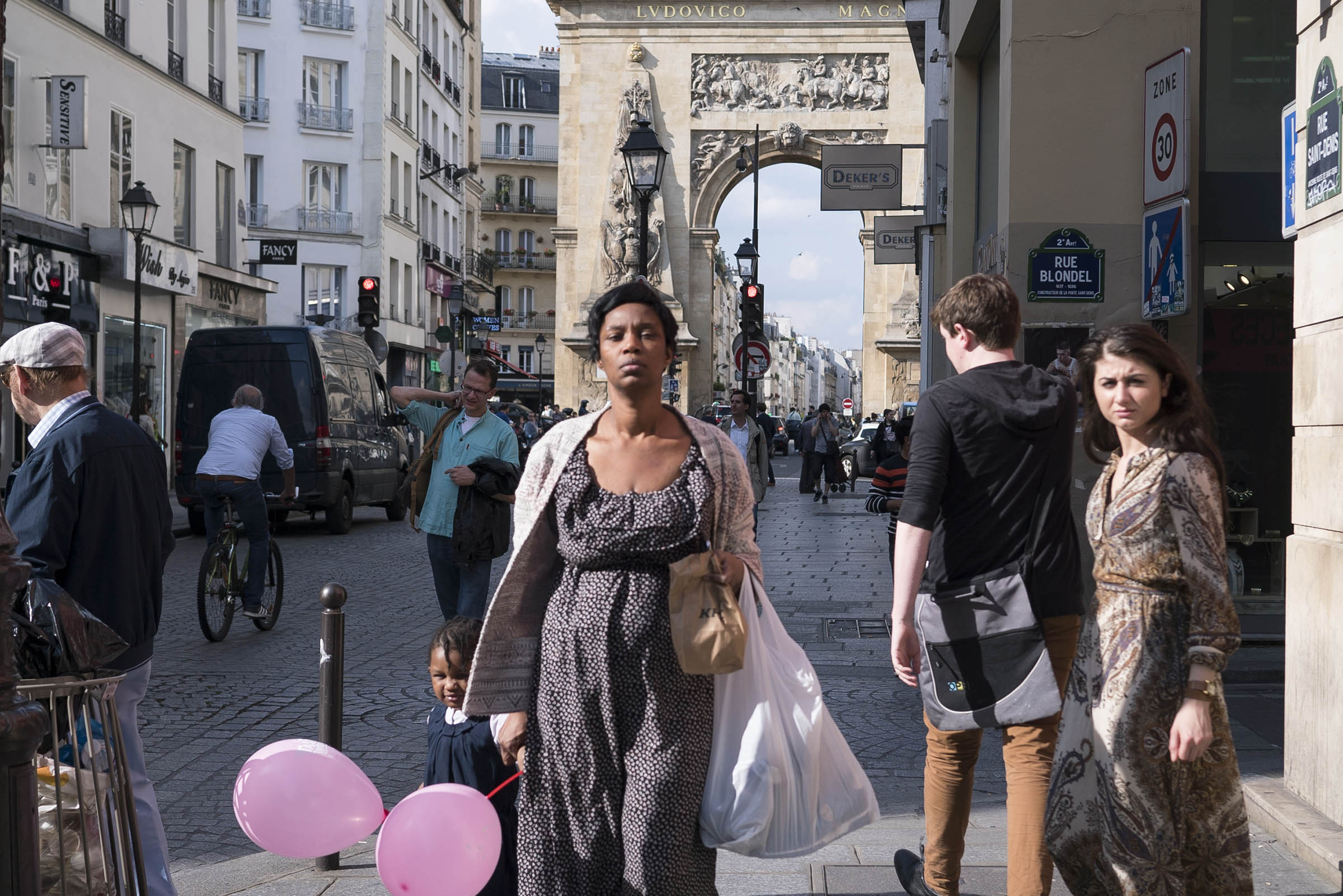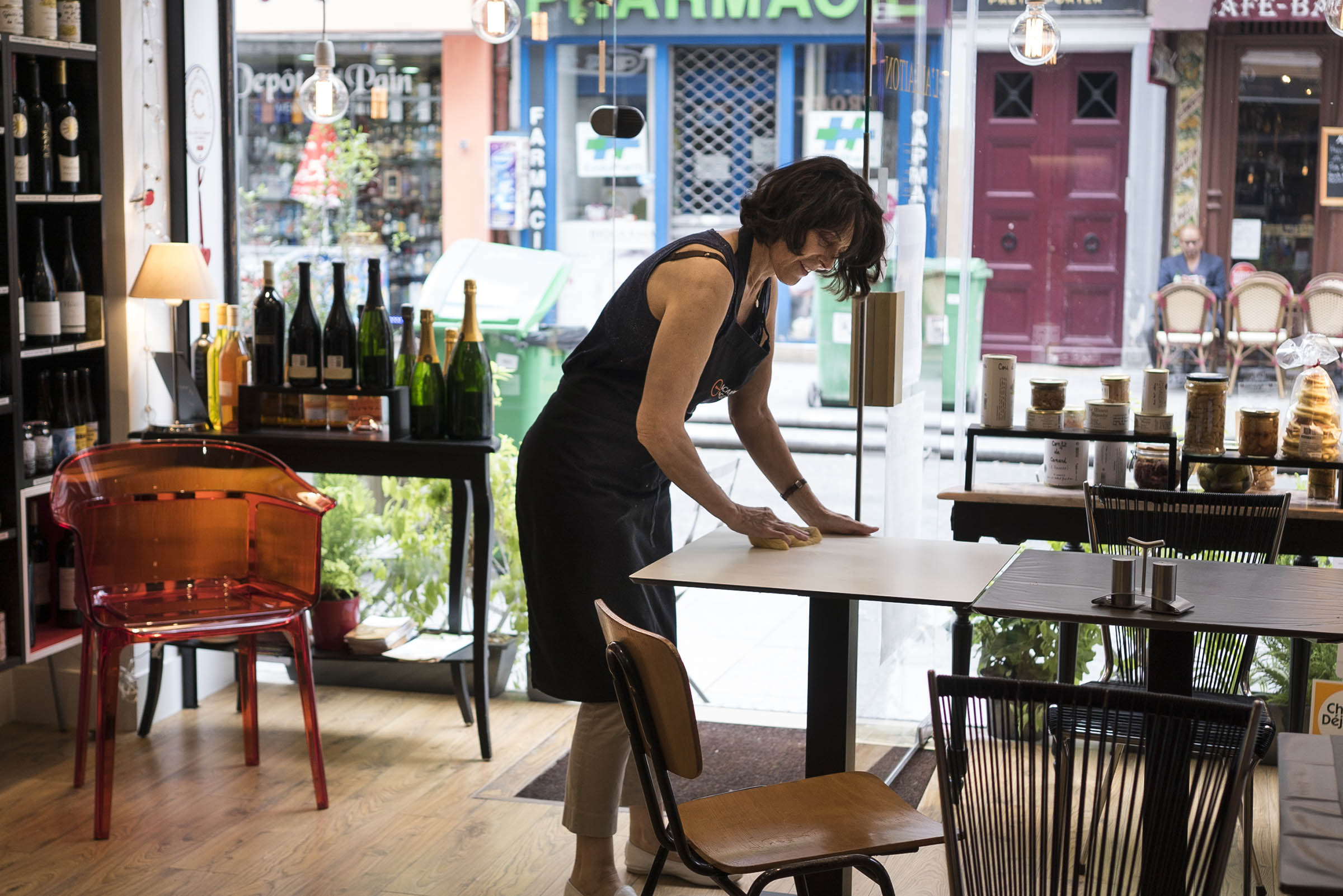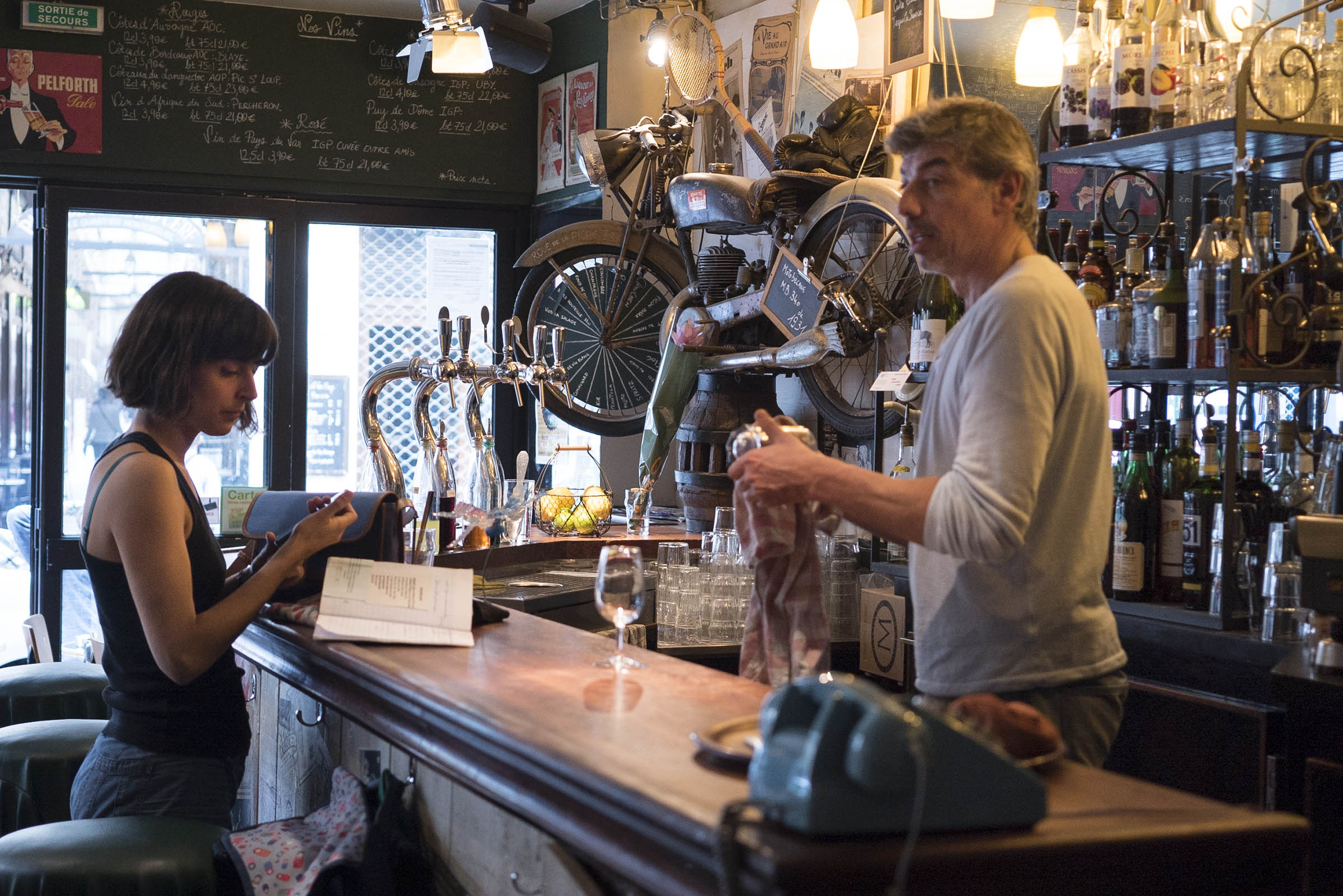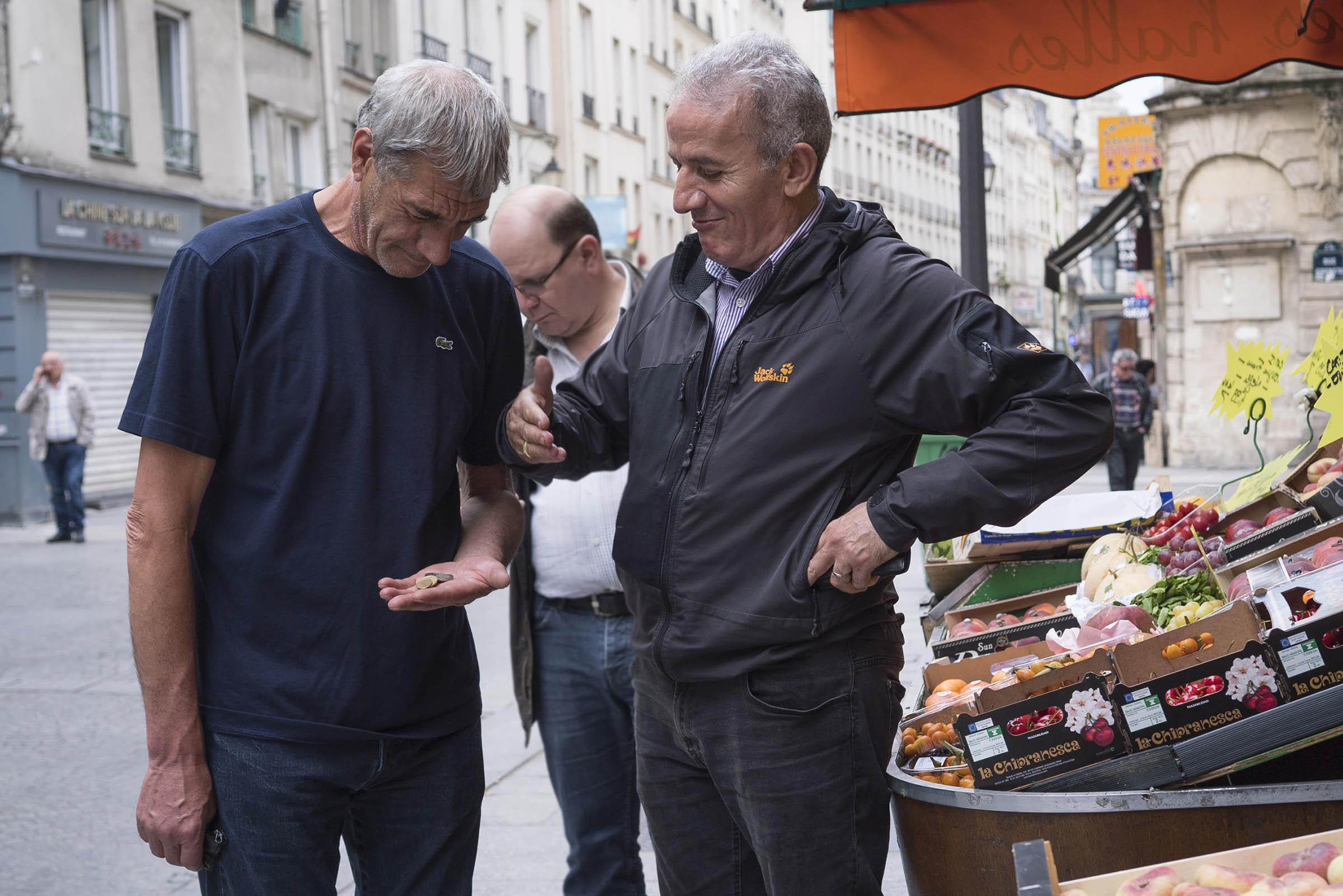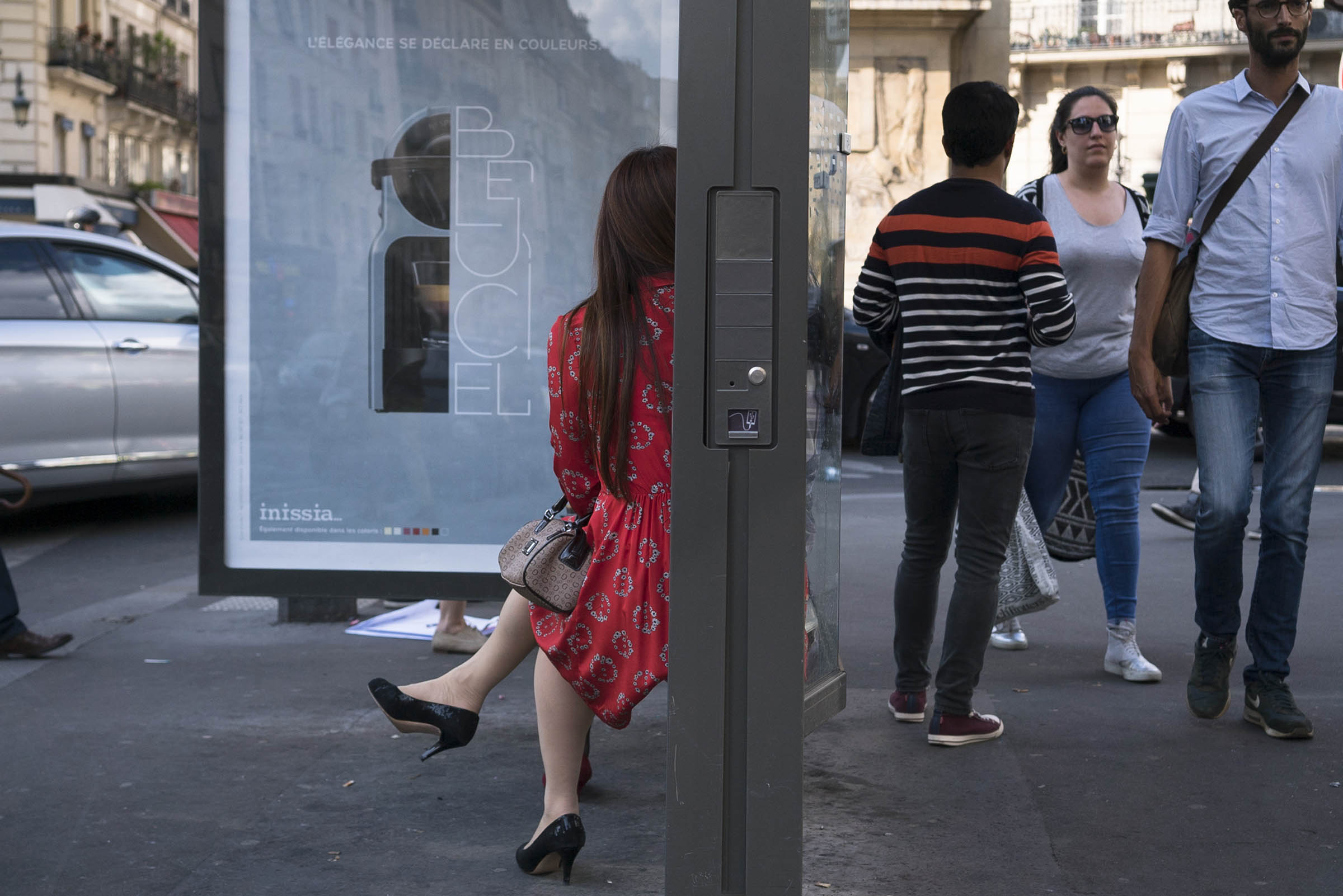Thresholds Issue ❷ ↓ Feature
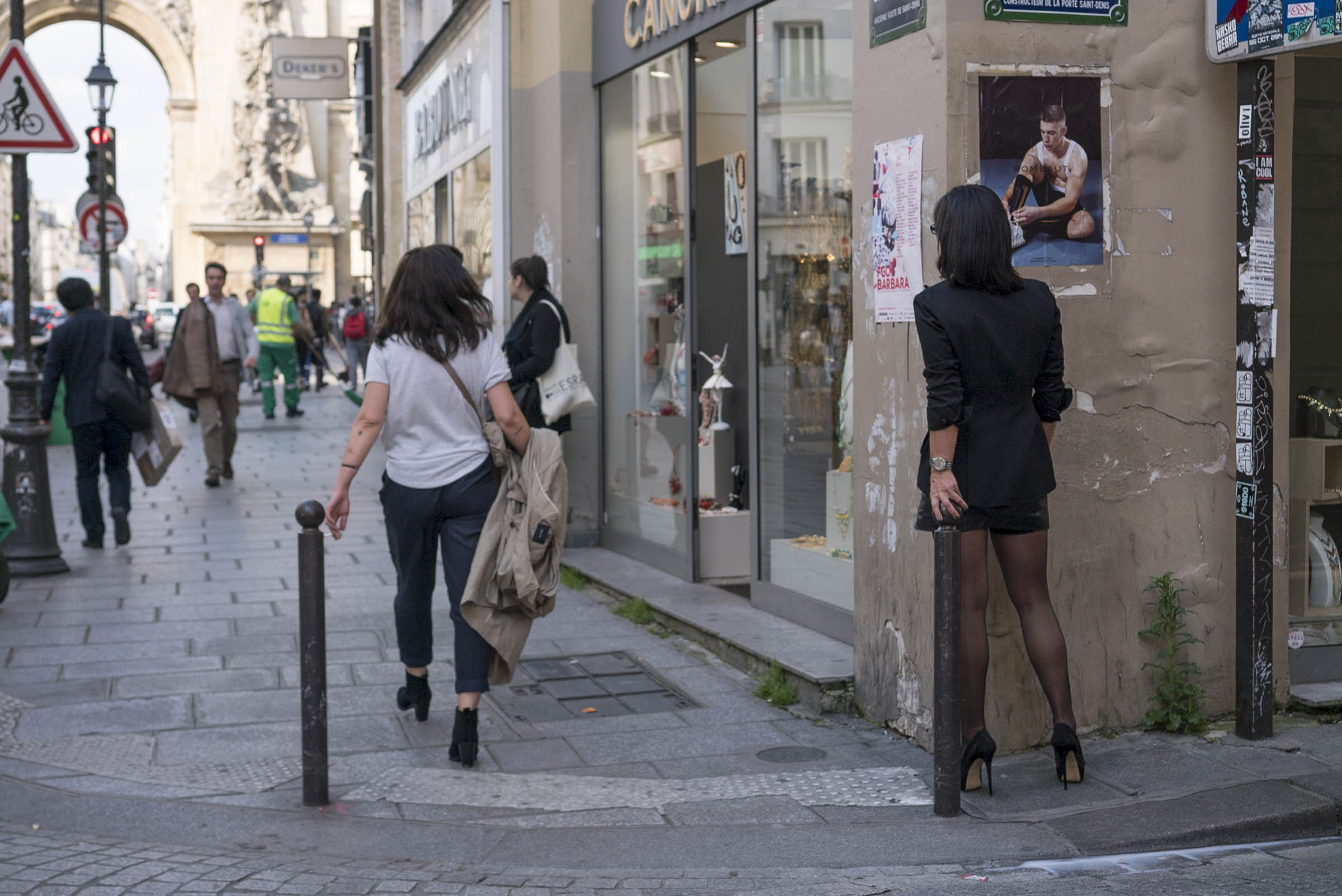
Not Wanted on the Rue Saint-Denis
It’s a February evening and a meeting is being held at the town hall of the 2nd arrondissement in Paris. A resident stands to speak. “We thought gentrification was under way,” she says, “and that it would eliminate prostitution. Can we expect to see an end to prostitution in this neighbourhood?” The debate was launched.
Many residents have come to complain of the “rampant prostitution” taking place on the streets, and sometimes even in old building staircases in this downtown Parisian neighbourhood. Local elected officials and police commissioners promise that the situation will improve while underlining the historical nature of this problem. “There has always been prostitution in this area,” explains the mayor. “Now it is declining. The situation is changing for the better.” Meanwhile, an association that helps sex workers points out that the majority of these women—victims of “modern-day slavery”—are in need of protection. The dominant discourse of the residents present is, granted, one of empathy but under one condition: not in my backyard. Sex work has no place in a gentrifying neighbourhood.
A Walk on the Wild Side
In the heart of the 2nd arrondissement, not far from Les Halles and a few metres from the famous Rue Montorgueil—a bustling open-air market where Parisians frequent trendy terraces and renowned food shops with sumptuous window displays—Rue Saint-Denis is and always has been an anomaly. While downtown Paris is increasingly marked by the presence of bourgeois residents and businesses, Rue Saint-Denis continues to be a world of deviance. Though it has a number of cafés, restaurants and fabric stores, its main features are a string of sex shops and the visible presence of sex workers.
True to its legacy as a working-class neighbourhood, the Rue Saint-Denis area seemed, until recently, to have remained on the fringes of the gentrification dynamics affecting the 2nd arrondissement: rents were still low, and there were obvious indicators of precariousness. One of the shopkeepers, familiar with the street for many years, gives the following description: “Everywhere else gentrification has completely taken over, but Rue Saint-Denis has stayed cosmopolitan and kept the scars of its past. Every day is a walk on the wild side here. There are still dealers—they’re more scattered but they’re there—and weirdos, dingbats and of course a few prostitutes who stay put no matter what!”
Among the Many Faces of Prostitution: “Traditional” Sex Workers
The prostitutes on Rue Saint-Denis have a particular and privileged position in the space of sex work and are therefore not representative of either Parisian prostitution or the profession at large. This phenomenon has been studied by a number of French sociologists, including Lilian Mathieu. Mathieu explains that the women working in traditional prostitution neighbourhoods in downtown Paris, such as Rue Saint-Denis, can be considered “dominant” in their line of work. They have been on the street for several years and own the studios where they turn their tricks. These sex workers, who refer to themselves as “traditional,” have a regular, loyal clientele, charge relatively high rates and work in satisfactory, sanitary conditions. They are keenly aware of the different health and social resources available to them and are only very rarely addicted to drugs or affected by HIV. Socially, they are relatively well-integrated and they fully own, even openly assert, their status as prostitutes. Their many years of experience give them authority and legitimacy in the eyes of their younger colleagues. They constitute a relatively cohesive group whose members acknowledge one another.
Lilian Mathieu, L’espace de la prostitution: Eléments empiriques et perspectives en sociologie de la deviance. Sociétés Contemporaines, n°38, 2000
Julie is one of these women. Having lived and worked on Rue Saint-Denis for 35 years, she’s witnessed the changes in the street, its businesses, population and ambience. “The street you see today is nothing like what it used to be,” she explains. “It was really something! Drama all the time, lots of girls… It was the prostitutes’ street, it was Rue Saint-Denis. Now it’s changed, but we still work here because… Because that’s the way it is. We’re not going to leave because the neighbourhood is changing. We still have our place here, even if it’s tough.”
Everywhere else gentrification has completely taken over, but Rue Saint-Denis has stayed cosmopolitan and kept the scars of its past.
Through the testimonials of Julie and others involved in sex-related businesses, I wanted to understand how these actors negotiate their place in this evolving urban space, from their simple presence on the street to forms of resistance—informal, everyday, and silent—against gentrification.
Julie, Rue Saint-Denis Sex Worker
Julie is among the sex workers who have been around the longest on Rue Saint-Denis. When she started, she shared a studio with several other prostitutes. Some of them worked in the morning, others in the afternoon, and others at night. She recalls another era, now almost mythical, when Rue Saint-Denis had a lively, joyful atmosphere, girls every few feet, and drama all the time, every day and every night. After several years, Julie wanted to turn over a new leaf. She left Paris for the west coast of France. She tried to change paths—to open a bar—but it didn’t work out. And so, she returned to Rue Saint-Denis. She needed money for herself and her children, and sex work allowed her to cover her expenses. When she returned, in the 80s, things had already started changing. Rue Saint-Denis was now pedestrian. Customers could no longer drive through the street, safe from prying eyes. Some of the businesses closed their doors and were replaced by peep shows. These competitors, who “sell only fantasy,” also came across rough times with the arrival of the Internet. Fantasy was no longer available only on street corners but also on a computer screen. Times were difficult and many girls either left the profession or moved to other streets, other neighbourhoods. Meanwhile, other girls arrived on the street, further north—prostitution that “breaks your heart” since it’s under the yoke of prostitution rings, and prostitution at lower rates “which is not good for business.” But Julie stays. She has her own studio now, her regulars. She watches as Rue Saint-Denis continues to change, first little by little, now faster and faster. Though residents complained, some of them already miss the old ambience, when there were lots of girls, lots of people and business was good.
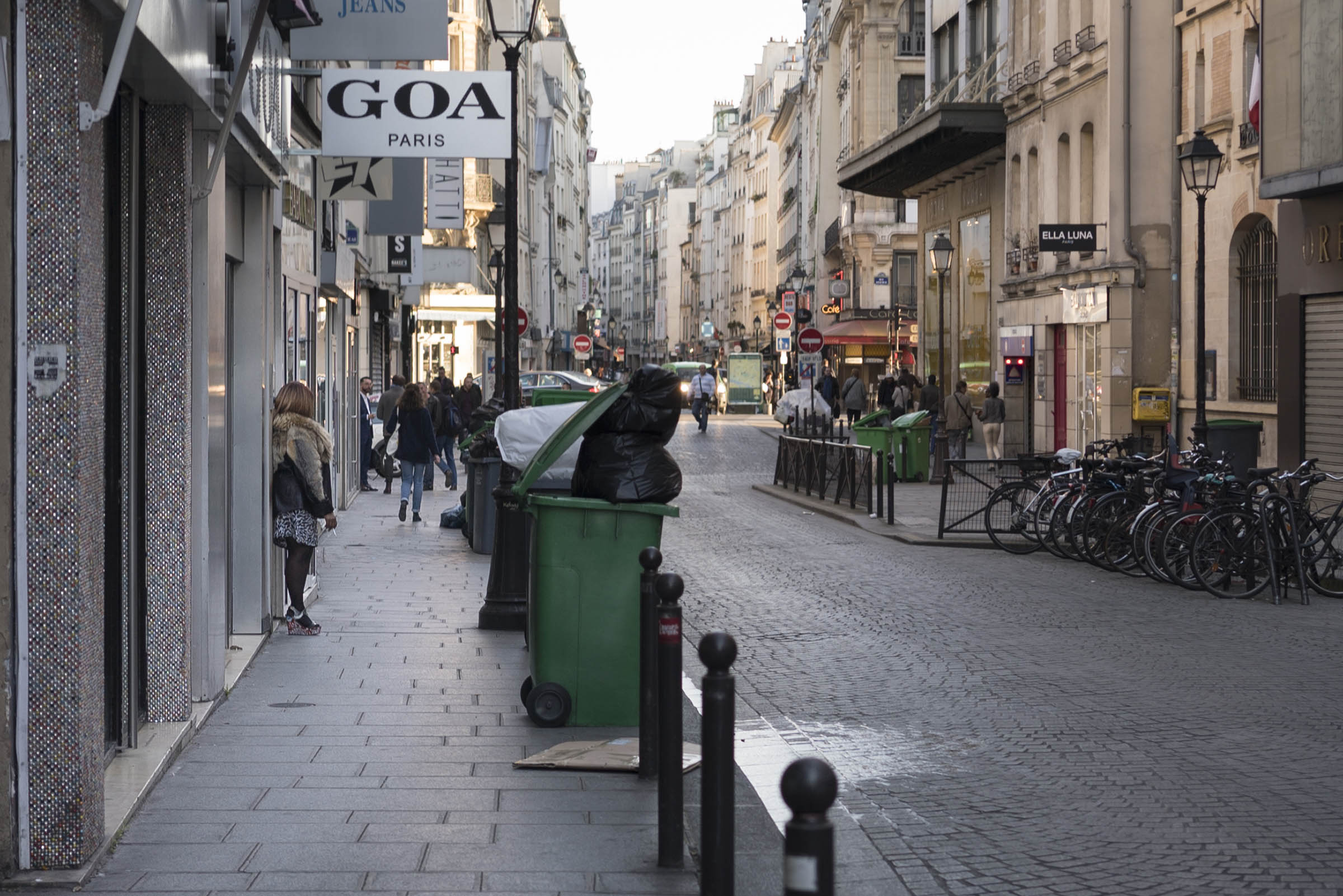
Resisting the Whitewashing of Local History
“I came here because this was where the work was,” Julie explains. “Rue Saint-Denis has always been a prostitutes’ street!” She cites the historical legitimacy of her presence to defend her continued practice. The disappearance of prostitution and sex-related activities on Rue Saint-Denis would be a mutilation of Paris’ history, dating back several centuries.
In fact, until the end of the 18th century, Rue Saint-Denis was located between the Cour des Miracles and the Cimetière des Innocents, sites “very popular with madams and scoundrels,” described by Victor Hugo in The Hunchback of Notre Dame as “a vast green-room, serving at that period for all the actors in that eternal drama of robbery, prostitution, and murder enacted on the streets of Paris.” Following the French Revolution, and after the reconstruction of Les Halles half a century later, Rue Saint-Denis became increasingly commercial. Its proximity to the Sentier, a clothing industry hub, also influenced the specialization of businesses. However, in the 70s and 80s, sex quickly replaced fabric as the street’s main industry with the opening of a dozen sex shops.
In this sense, the presence of sex workers, sex shops and peep shows on Rue Saint-Denis is the imprint of a history that still influences the representations, images and conceptions that make up the daily reality of the street. Julie describes the heritage aspect of this presence: “A street of Parisians, yes, and with tourists too. When there was still motor traffic, buses of Chinese tourists would drive by and take pictures. You had the Eiffel Tower and Rue Saint-Denis. That’s the way it was. Tourists came to see the monuments and Rue Saint-Denis was part of all that.”
To Julie, the historicity of the presence of sex work is not random but explained by its beneficial role in the moral order of Paris. “It’s historic,” she says.“Rue Saint-Denis is a street that offers these types of services. And let me tell you, it’s a good thing we’re here! There are people who really need it. There have always been people who need it. We haven’t moved, we don’t want to move, and so, we won’t.” To many of the “traditionals” like Julie, the commemoration of the full history of the street becomes an argument for resistance.
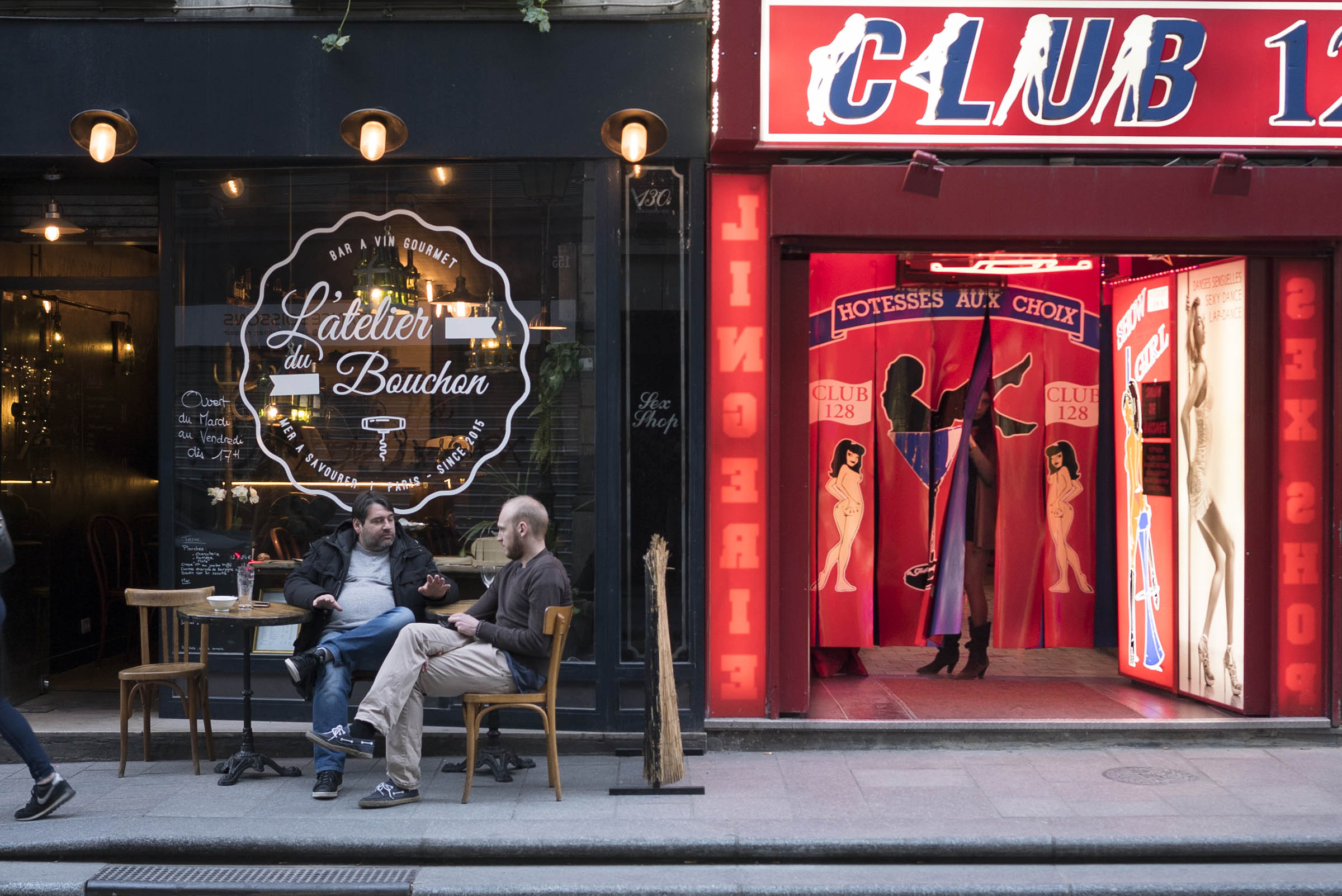
Resisting Through the (Re)appropriation of Space
Since the 1970s, central Parisian neighbourhoods have been undergoing gentrification as their location has (once again) become attractive and strategic for local political and economic players as well as for some wealthier city-dwellers, at the expense of the working class. Apartments are renovated and the rent goes up; businesses that cater to the new urban middle classes flourish, with an increased focus on fashion and home decor; ordinary cafés are trans- formed, restaged in a mixture of the trendy and the traditional.
In 2004, the city of Paris launched an operation called Vital’Quartier designed to develop neighbourhood businesses in certain districts whose commercial makeup was considered outdated and no longer serving the needs of residents. The Saint-Denis district was one of the areas targeted by this program. Following resident complaints about the noise disturbance caused by sex shops and sex workers during night-time hours, the businesses on Rue Saint-Denis were identified as misaligned with the needs of residents. The City’s interventions in the area meant stepping up the fight against sex shops and peep shows, which were considered responsible for noise disturbance and encouraging the presence of sex work. Over half of these establishments have closed their doors in the past ten years. Some of the former sex shops and peep shows remain vacant while others have been taken over by new neighbourhood shops: an organic fruit and vegetable store, a florist, a wine shop and restaurants. Though the future of some of these businesses remains uncertain, these types of changes to a commercial street are typical of the gentrification process.
Some of the former sex shops and peep shows remain vacant while others have been taken over by new neighbourhood shops: an organic fruit and vegetable store, a florist, a wine shop and restaurants.
Also typical of this process is the arrival of middle to upper-class populations who wish to live in the heart of the city while taking advantage of a low-cost urban space. Once settled, the new residents express their desire to “change the image of Rue Saint- Denis.” They organize neighbourhood events or suggest projects for planting trees and flowers on the street to “counter its shady look” by making it “prettier” and “more attractive.” These projects and beautification efforts are indications of a strategy to modify the Rue Saint-Denis, making the street more bourgeois. In this context, prostitution is seen as a problem that ruins the street’s image. As a recent resident explained: “What we expect is to prevent sex shops and eliminate prostitution because they no longer correspond to the new image of Rue Saint-Denis.”
Traditional sex workers resist the gentrification process—and, consequently, the emergence of a new register of norms and values based on contemporary morals—by appropriating spaces with their codes, habits and practices. Sex workers and peep show actors still occupy Rue Saint-Denis by day and by night and make their activities explicitly known—never hiding them, and sometimes flaunting them—through their visible presence outside the doors of their buildings or storefronts, or through the suggestiveness of their outfits. “We’re not going to hide!” exclaims a peep-show stripper. “On the contrary, we stay out at the front. It might make some people uncomfortable but we’re just here like we’ve always been, working and everything. We’re not at the National Assembly here, we’re on Rue Saint-Denis.”
Being visible on Rue Saint-Denis is also a way for sex workers to defend their territory, and even more so their identity. Though not defined by tangible markers, there is an understanding that the sidewalks of the central part of Rue Saint-Denis, and of some of the streets adjacent to it, belong to this community of sex workers. Non-traditional sex workers face more risks, stigmatization.
Competition and Symbolic Boundaries Between Sex Workers
On Rue Saint-Denis, and on some of the streets perpendicular to it, the space is shared, mapped and delineated by the different groups of sex workers who practice in this area historically marked by prostitution. In the past decade, “traditional” sex workers have been faced with a different type of competition. New prostitution networks have arrived in the neighbourhood, operating essentially at nightfall. Victims of an economic expatriation gone wrong, these sex workers are women from West Africa and China who were introduced to prostitution on the streets of Paris. They usually belong to prostitution rings and turn tricks for a lower, sometimes much lower price, than the “traditionals.” This type of prostitution is less organized and takes place in rented rooms or, for those in more precarious situations, in building lobbies or staircases. It’s these networks that are the focus of residents’ complaints and of interventions by police units and associations. While “traditional” sex workers express empathy for these women—“poor them, they’re caught in this whirlwind without any knowledge about the profession, and they didn’t choose it, it’s those networks that people should be fighting against”—the two worlds, though they exist side by side and are in competition, do not interact. Invisible walls keep these different faces of prostitution apart: the “new” sex workers practice in the north, and the “traditionals” in the south. For the latter defending their territory, maintaining a distance despite the spatial proximity, is a matter of protecting their profession as independent sex workers and protests in a space that they cannot appropriate due to their vulnerability. The nebulous space occupied by “non-traditionals” is intimately linked to the precarious-ness of their situation. However, the space most endangered by gentrification is the one occupied by the sex workers in more privileged socioeconomic conditions. What is at stake, therefore, is much more than individual interests: the very existence of the group and profession is being fought for through the (re)appropriation of Rue Saint-Denis.
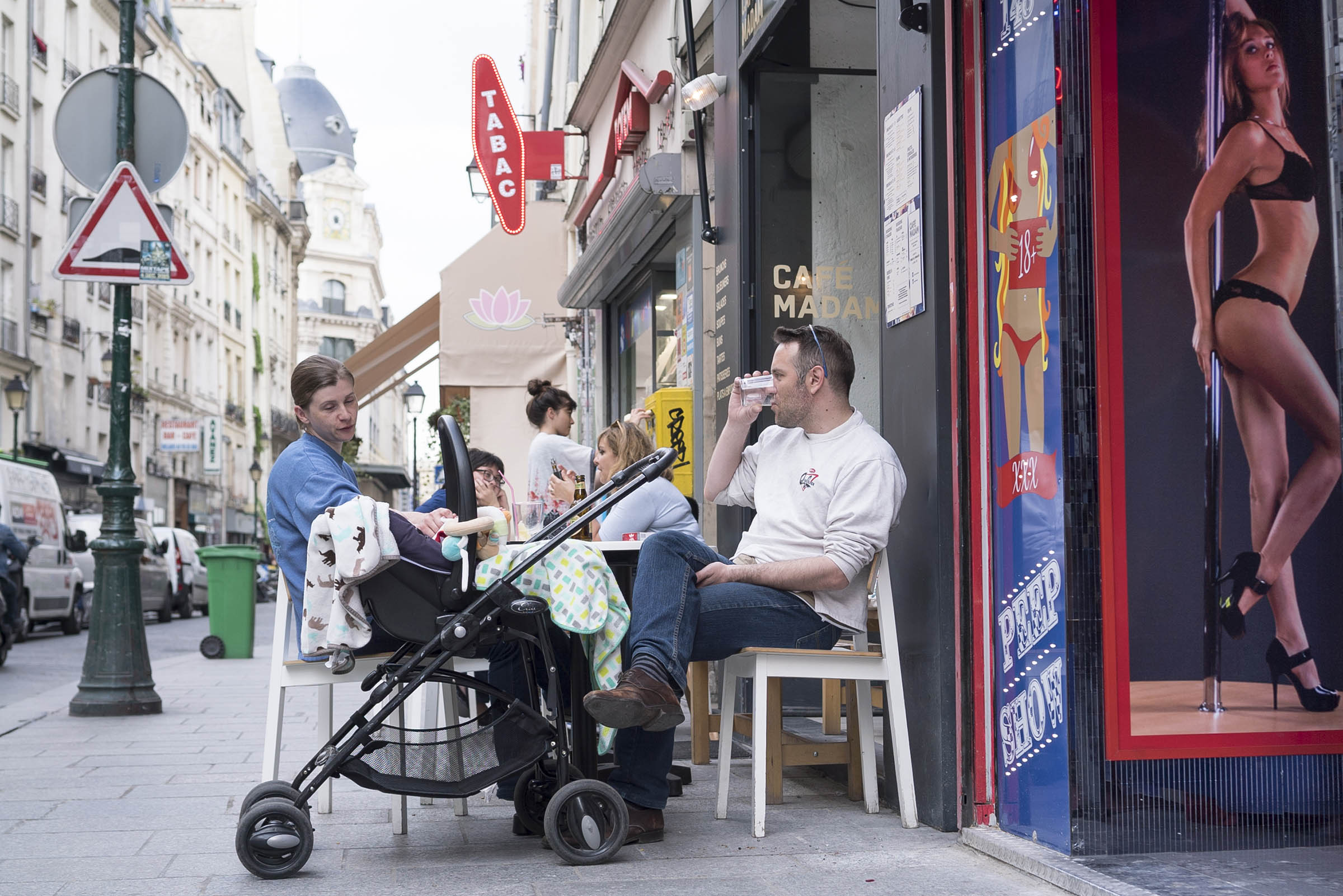
Resisting the Moralization of Urban Space
Despite the recent changes, prostitution and sex-related businesses are still part of the identity of Rue Saint-Denis. Many peep shows are still open and active and a number of “traditional” sex workers who have been working on the street since the 70s are still practising. However, whereas their historical presence on Rue Saint-Denis once gave them a type of legitimacy, sex workers, sex shops and peep shows are now affected by the changing image of the space they occupy. As one sex worker explains: “Rue Saint-Denis was … a typical Parisian spot. Because it was a street that was … a street where you walked and there was always drama. For me, Saint-Denis was a street that had girls, and a great atmosphere. And now it’s sad … It’s sad, we’re alone. That old vibe is gone and people look at us differently. We’re practically looked down upon, as if we shouldn’t be here anymore.”
Today, Rue Saint-Denis is constantly in flux and can’t be boxed into a single imaginary. In the face of urban policies that favour businesses aligned with the representations and consumption practices of the middle and upper classes, the continued presence of peep shows and sex shops can be considered a form of resistance. It is a coexistence that curbs the gentrification process. Even if times are hard for this “undesirable population,” giving up is out of the question. “Some customers are confused when they come and see what Rue Saint-Denis is becoming,” explains a peep show tout. “It’s not a party like it used to be. But we put on shows, so we’re still here. We’re a business with all the paperwork. We’ve got a show licence. So there’s no reason for us to leave. Everything is legal here so they can’t kick us out.”
The legal nature of these businesses is cited as an ethical defense of their activities in the face of stigmatization. If sex workers and sex-related businesses are currently considered undesirable, it’s because they don’t correspond to the norms and values imported by the new residents. For those involved in this line of work, resistance relies on defending their own set of values, among the multiple realities that make up Rue Saint-Denis.
Being visible on Rue Saint-Denis is also a way for sex workers to defend their territory, and even more so their identity. <!– Though not defined by tangible markers, there is an understanding that the sidewalks of the central part of Rue Saint-Denis, and of some of the streets adjacent to it, belong to this community of sex workers.–!>
Conclusion
French sociologist and philosopher Maurice Hallbwachs argued that a space, though always in the midst of transformation, is also a constant reminder of the historical continuity that formed between a group and a place. He said that spaces and places are inseparable from the people that act on a city. As a result, the aspirations of the present–commercial changes, residential mobility and public policy–cannot easily erase the presence of the past. The Rue Saint-Denis sex workers are a group whose identity has been constructed in tandem with its feelings of belonging to this street. Because of this, this street’s very history restrains the process of gentrification that has begun in this area. The silent and informal forms of resistance exercised on a daily basis by “traditional” sex workers and peep show actors to (re)negotiate their place on Rue Saint-Denis is a form of resistance within, and defence of, their discourse and practices, representing a system of values considered deviant only by others. For Julie, the deci-sion is clear: she will stay here, where she is at home, on Rue Saint-Denis, where, as she describes, a sex worker wears the many hats of “actor, psychologist, and nurse of the soul and the sex.” ●
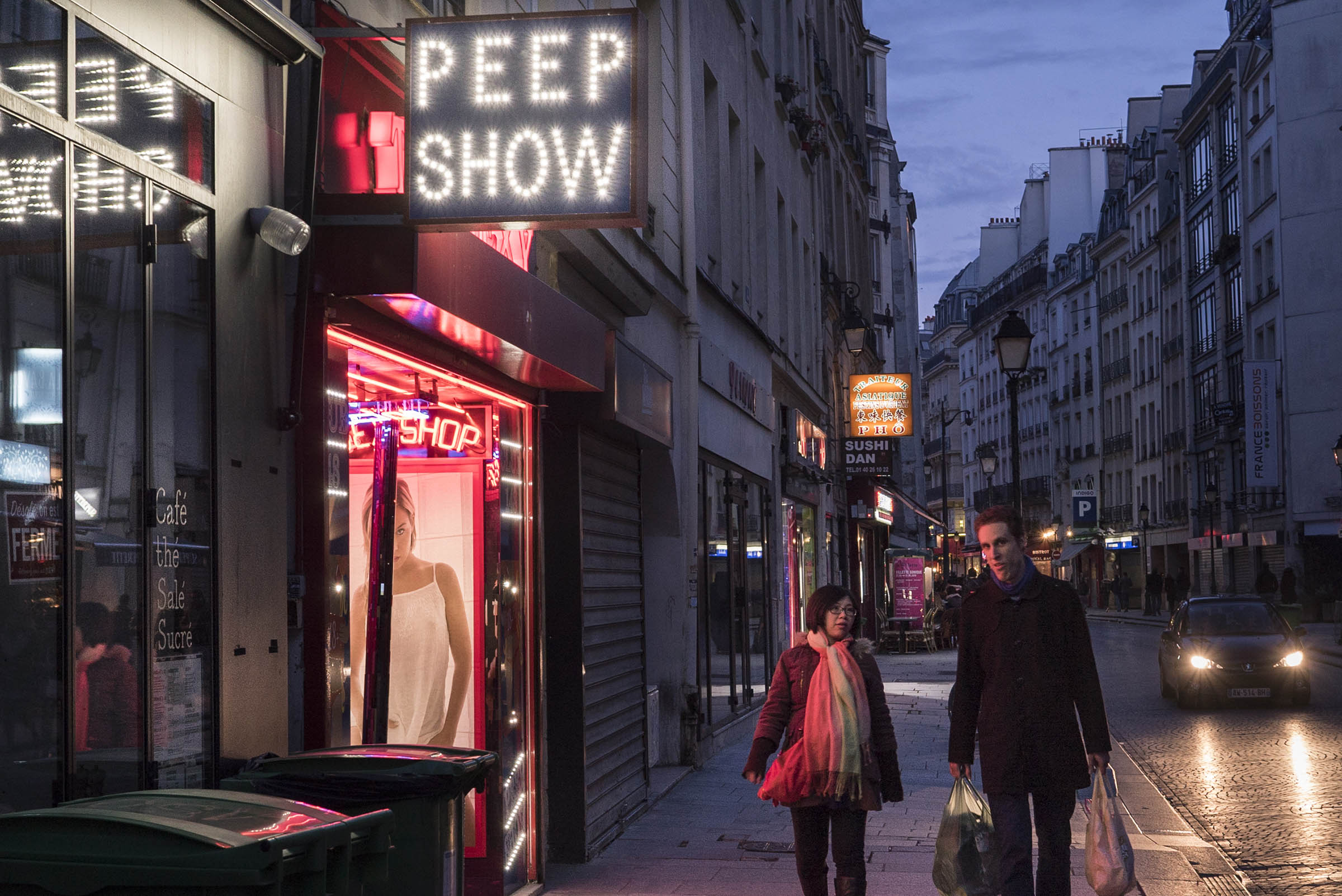
—
Mathilde Caro is a doctoral student at the EHESS (Ecole des Hautes Etudes en Sciences Sociales) in the sociology department. Her academic work explores the rue Saint- Denis and rue Montorgueil, two streets in the center of Paris, characterized by their spatial proximity and their social and symbolic distance.
